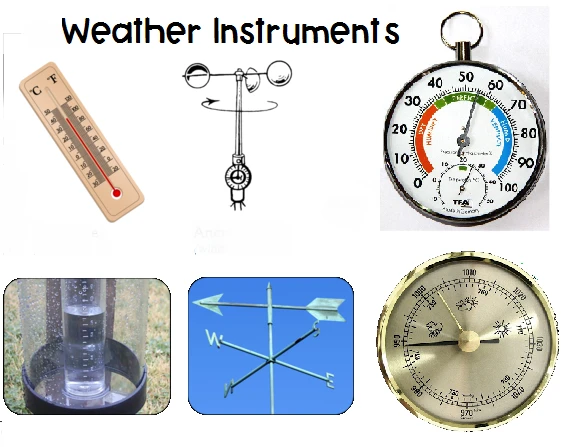
# Weather Instruments: Essential Tools for Meteorological Measurements
## Introduction to Weather Instruments
Weather instruments are specialized tools designed to measure various atmospheric conditions. These devices play a crucial role in meteorology, helping scientists and weather enthusiasts collect accurate data about our environment. From simple thermometers to sophisticated radar systems, weather instruments provide the foundation for weather forecasting and climate studies.
## Common Types of Weather Instruments
### Thermometers
Thermometers measure air temperature, one of the most fundamental weather parameters. Modern digital thermometers provide quick and accurate readings, while traditional mercury or alcohol thermometers remain reliable options.
### Barometers
Barometers measure atmospheric pressure, which helps predict short-term weather changes. Mercury barometers and aneroid barometers are the two main types, with the latter being more portable and commonly used today.
### Anemometers
These instruments measure wind speed and direction. Cup anemometers are the most recognizable type, while sonic anemometers use ultrasonic waves for more precise measurements in research applications.
### Hygrometers
Hygrometers measure humidity levels in the air. Psychrometers (wet-and-dry bulb thermometers) and electronic hygrometers are widely used to determine relative humidity.
### Rain Gauges
Simple yet essential, rain gauges measure precipitation amounts. Standard cylindrical gauges are common, while more advanced tipping bucket rain gauges provide automated measurements.
## Advanced Weather Measurement Tools
### Weather Radars
Modern weather radars can detect precipitation, measure its intensity, and track storm movements over large areas. Doppler radar technology provides additional information about wind patterns within storms.
### Weather Satellites
Geostationary and polar-orbiting satellites provide comprehensive views of weather systems from space, monitoring cloud patterns, storm development, and other large-scale atmospheric phenomena.
### Weather Balloons
Equipped with instrument packages called radiosondes, weather balloons collect data about temperature, humidity, pressure, and wind at various altitudes in the atmosphere.
## Importance of Weather Instruments
Accurate weather measurements are essential for:
– Weather forecasting and severe weather warnings
– Climate change research
– Aviation safety
– Agricultural planning
– Marine navigation
– Construction and outdoor event planning
## Maintaining and Calibrating Instruments
To ensure accurate measurements, weather instruments require regular maintenance and calibration. Proper siting of instruments is also crucial – they should be placed away from obstructions that could affect readings.
## Conclusion
From simple backyard weather stations to sophisticated satellite systems, weather instruments provide the data necessary to understand and predict atmospheric conditions. As technology advances, these tools continue to improve, offering more precise measurements that enhance our ability to monitor and forecast weather patterns. Whether for professional meteorology or personal interest, understanding weather instruments helps us better comprehend the complex systems that shape our environment.
Keyword: wether instruments